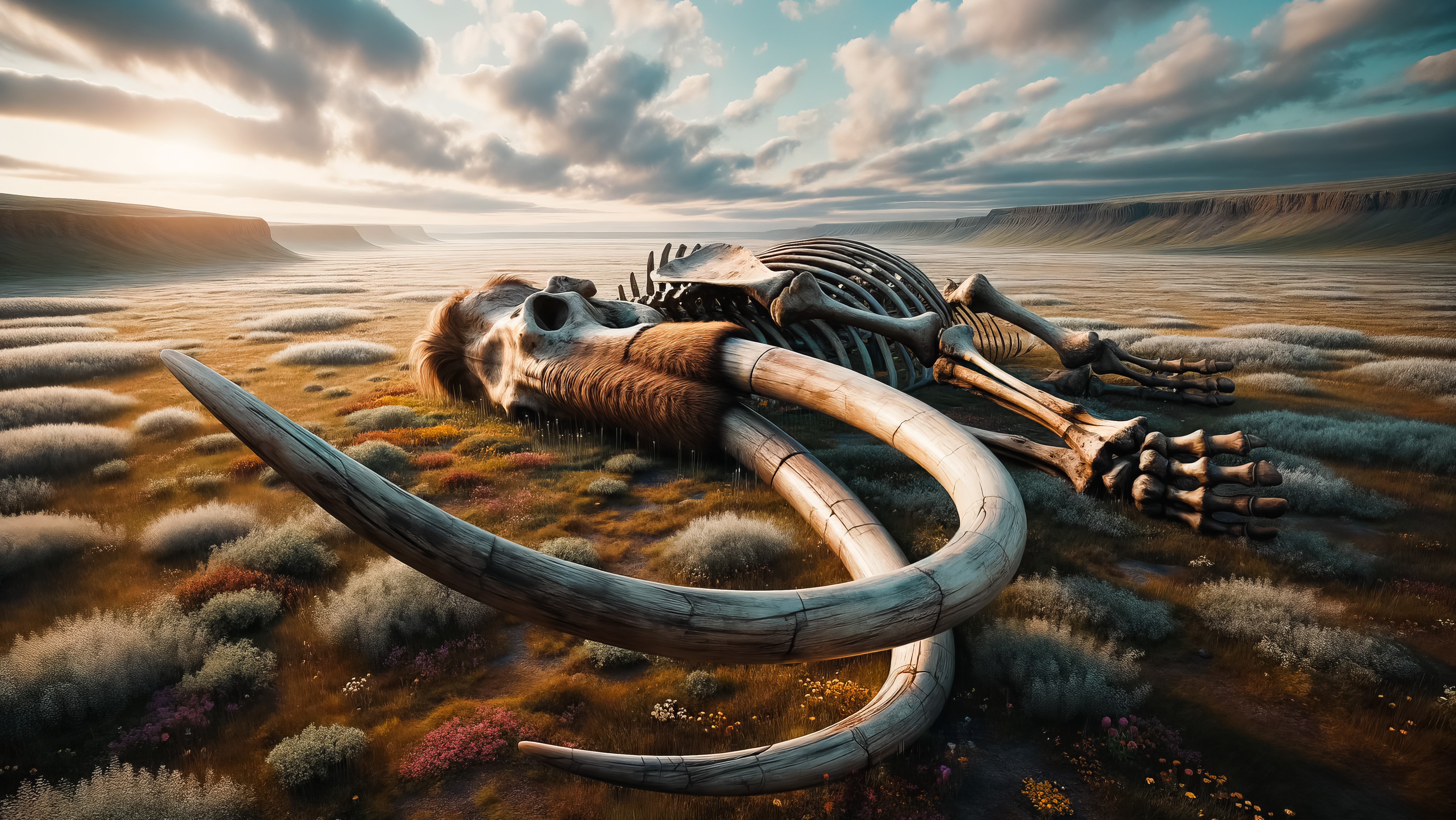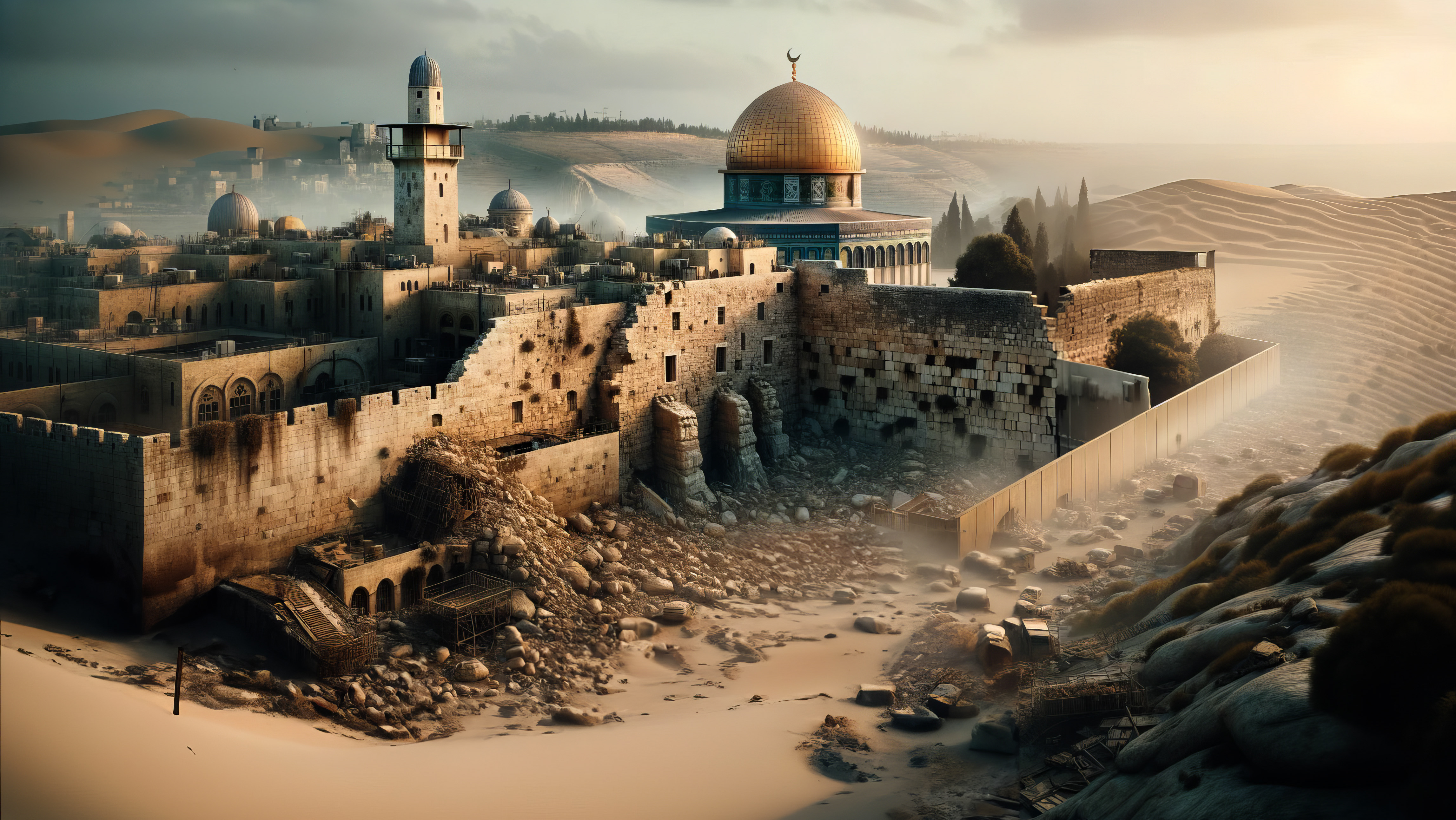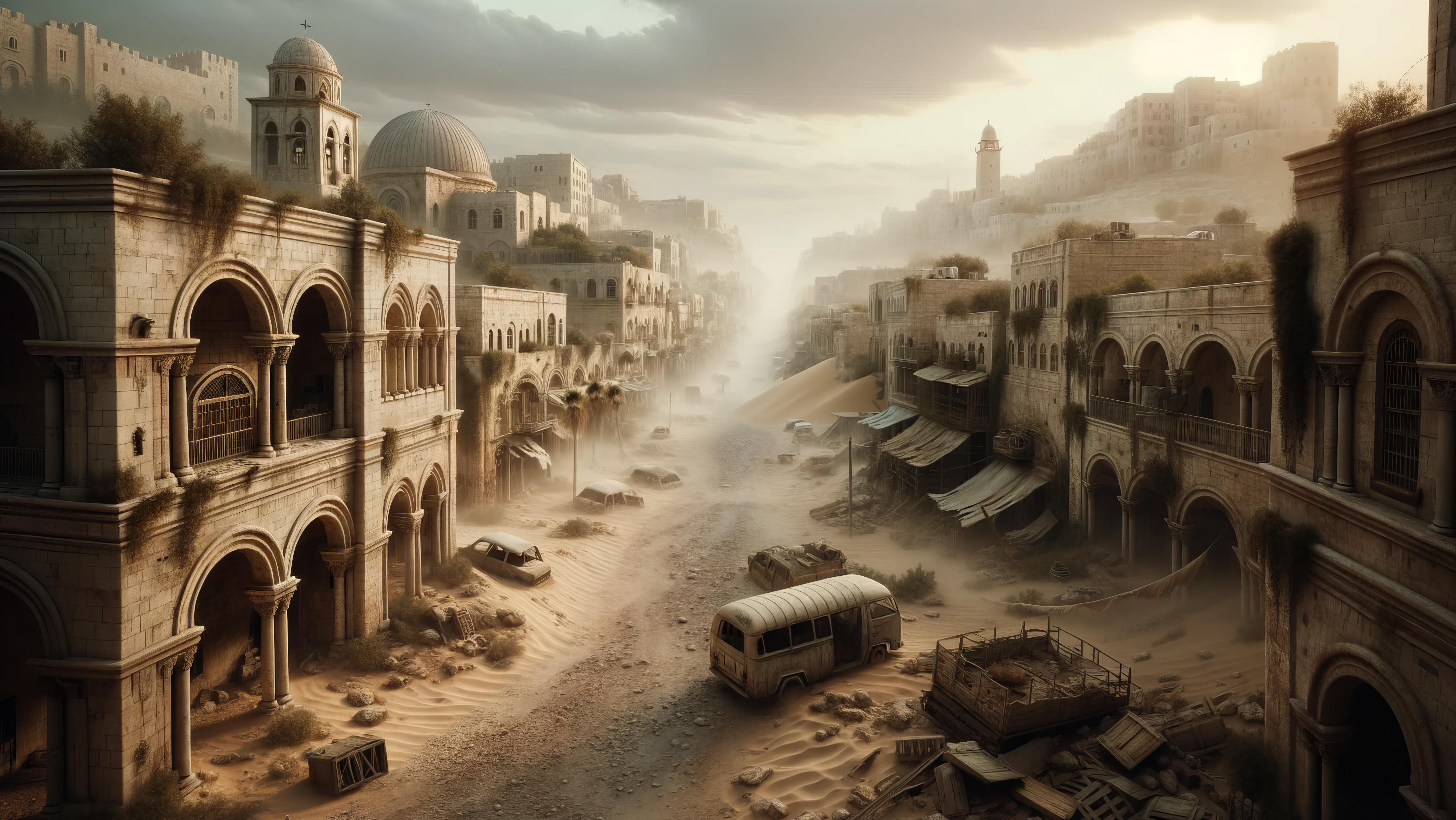Northern Europe and the Icy Frontier: Echoes of the Future
Beyond the plains, the terrain morphed once again, leading me into the chilly embrace of Northern Europe. As the Temporal Navigator made its way further north, the verdant landscapes gradually gave way to vast expanses of snow and ice. This was a realm where nature reigned supreme, its icy fingers sculpting a world of stark, ethereal beauty.
The northern reaches held a particular significance for me. This was a land that bore silent witness to crucial chapters in human evolution. It was here, amidst the glaciers and frozen tundras, that early humans had once battled nature's harshest elements, their resilience and ingenuity shaping the course of their destiny.
I disembarked amidst a snow-laden forest, the tall pines standing like sentinels, their boughs heavy with the weight of fresh snowfall. The silence was profound, broken only by the distant howl of a wolf or the soft crunch of snow beneath my feet. In the distance, a herd of mammoths moved with ponderous grace, their massive forms contrasting with the delicate snowflakes that danced around them.
As I ventured deeper into this icy realm, I couldn't help but reflect upon humanity's remarkable journey. These very lands, in the millennia to come, would witness the rise of the Vikings—seafarers, explorers, and warriors who would leave an indelible mark on history. Their ships, masterpieces of craftsmanship, would traverse vast oceans, connecting distant lands and cultures.
But beyond the historical significance, the icy landscapes evoked deeper contemplations about humanity's place in the universe. The sheer scale and majesty of nature, from the towering glaciers to the endless nights lit only by the ethereal dance of the auroras, were humbling. They served as a poignant reminder of the transient nature of human existence. Empires would rise and fall, civilizations would flourish and wither, but the eternal dance of the cosmos would continue, indifferent to the fleeting ambitions of mankind.
Yet, amidst this vastness, early humans had carved out a niche. Their art, discovered in caves, told tales of their dreams, fears, and aspirations. Their tools, rudimentary yet effective, spoke of a species that continually adapted, learned, and evolved. Their very survival in these harsh climes was a testament to their indomitable spirit and the innate desire to explore, to conquer, and to understand.
The night in the northern realms was a spectacle in itself. The sky, ablaze with the Northern Lights, painted ethereal patterns in hues of green, pink, and violet. Each shimmer, each waltz of light was like a cosmic dance, a celebration of the universe's infinite wonders.
As I retreated to the warmth of the Navigator, the icy landscapes of Northern Europe left me with a profound sense of introspection. This journey, through time and space, was not just about observing the past. It was a quest for understanding—for drawing parallels between the world of yesteryears and the challenges of the present. In the echoes of the past, in the footprints left behind on the snowy expanses, lay lessons for the future, guiding lights for generations yet to come.
The Enigma of the Neolithic Revolution
Leaving behind the icy embrace of the northern realms, the Temporal Navigator charted a course towards an epoch that would forever alter the trajectory of human history: the Neolithic Revolution. The vast plains and fertile valleys of ancient Mesopotamia beckoned, promising insights into the dawn of civilization.
As the Navigator seamlessly merged with the landscape, I found myself amidst expansive fields, teeming with early crops. Golden waves of wheat swayed gently, kissed by the warm sun, while plots of barley stood tall, their heads heavy with grains. This was the cradle of agriculture, the very foundation upon which the edifices of future civilizations would rise.
A short distance away, a settlement came into view. Simple mud-brick homes, organized in clusters, surrounded a communal area. Smoke rose from a central hearth, and the air was filled with the aroma of freshly baked bread. The people, their hands stained with the rich soil, worked in harmony, tending to their crops, herding their livestock, and crafting tools that would aid in their daily tasks.
The significance of this era was profound. For the first time in their tumultuous history, humans transitioned from being mere wanderers to settlers. They harnessed the land, domesticated wild animals, and laid the foundations for organized communities. The implications were vast: from these humble beginnings would emerge the complex tapestry of politics, trade, art, and culture.
However, with the promise of abundance came challenges. As I observed from a distance, conflicts arose—disputes over land, water, and resources. The very act of settling, of laying claim to a piece of Earth, brought with it the complexities of ownership and territoriality. It was a poignant reminder that every leap forward in human evolution was accompanied by its own set of dilemmas.
Yet, amidst these challenges, the spirit of collaboration shone brightly. The community came together to build structures that would stand the test of time—granaries to store their harvest, walls to protect their settlements, and communal spaces where stories, dreams, and aspirations were shared. Here, in the heart of ancient Mesopotamia, the seeds of human society were sown.
As night descended, casting the settlement in a soft, golden glow, I was drawn to the sounds of celebration. The people, gathered around the central hearth, sang songs of gratitude, their voices echoing the timeless bond between man and Earth. Their dances, rhythmic and soulful, told tales of seasons, cycles, and the eternal dance of life and death.
Deep in reflection, I pondered upon the lessons of the Neolithic Revolution. It was a mirror to humanity's innate desire to evolve, to create, and to leave a lasting legacy. Yet, it also served as a cautionary tale, highlighting the delicate balance between progress and sustainability. In the footprints left behind on the fertile plains, in the very grains that sustained these early communities, lay a message for the future: that true progress is achieved not by mere conquest, but by harmonizing with the world around.
The Precipice of Change: Reflections from the Dawn of Hierarchy
The horizon revealed a landscape in flux. While the vast plains and undulating hills remained familiar, the nascent hints of organized communities were unmistakable. I found myself in a transitional period, approximately 12,000 years ago, when the very fabric of human society was undergoing a seismic shift.
Clusters of rudimentary huts, crafted from mud and straw, dotted the landscape. Around them, patches of cultivated land hinted at the early experiments in agriculture. Small herds of domesticated goats and sheep grazed nearby, watched over by their human caretakers.
Yet, amidst this seemingly idyllic setting, the undercurrents of change were palpable. For tens of thousands of years, humans had lived as nomadic hunter-gatherers, their societies largely egalitarian. Their minds, their cognitive abilities, had remained largely unchanged. Yet, something was different now. The very act of settling down, of laying claim to a piece of land, of cultivating it and reaping its bounty, was beginning to reshape the human psyche.
As I observed these early settlers, subtle signs of differentiation emerged. Some huts were larger, placed centrally, indicating those who held a higher status within the community. Granaries, where the harvested grains were stored, were guarded, hinting at the concept of ownership and the value of surplus. With the emergence of surplus, not everyone was bound to the fields. Some turned to craftsmanship, creating pottery, tools, and ornaments. Others took on the role of spiritual leaders, their proximity to the divine granting them a unique status within the community.
This nascent hierarchy was not borne out of malice or overt ambition. It was a natural outcome of a society that was beginning to specialize. Yet, with specialization came stratification. And with stratification came the first inklings of power dynamics.
The evening brought with it a communal gathering. Around a roaring fire, the community came together, sharing stories, singing songs, and partaking in the fruits of their collective labor. Yet, even in this gathering, the subtle nuances of hierarchy were evident. Some voices carried more weight, some opinions shaped the collective decisions, and some individuals sat closer to the fire, basking in its warmth and the reverence of their peers.
As night deepened, casting the settlement in a silvery glow, I was left in contemplation. The seeds of civilization, with all its promise and challenges, were being sown. The very attributes that would propel humanity to unparalleled heights—organization, collaboration, and innovation—also bore within them the shadows of discord, disparity, and dominance.
Retreating to the sanctuary of the Navigator, the landscape of 12,000 years ago offered a poignant reflection. Humanity stood at a crossroads, teetering between the egalitarianism of its past and the allure of structured progress. The choices made during this pivotal era would echo through the ages, shaping the destiny of countless generations to come.
The Dance of Progress and Peril
As the dawn of a new day painted the skies with hues of amber and crimson, I found myself further along the timeline, in a world that had embraced the sedentary life with fervor. Settlements had grown in size and complexity, and the tentative steps towards agriculture had now blossomed into full-fledged farming communities. The once-nomadic tribes had firmly anchored themselves to the land.
The landscape was dotted with expansive fields, where rows upon rows of crops swayed gently in the breeze. Irrigation channels, crafted with ingenuity, ensured that the fields remained fertile, bearing testament to the early engineering prowess of these settlers.
Yet, with this progress came challenges that were both external and internal. As these communities grew, so did their needs. The once-abundant resources now had to be managed and allocated judiciously. Disputes arose over land ownership, water rights, and access to stored grain. The very surplus that had once symbolized prosperity now became a potential source of conflict.
Externally, the settled nature of these communities made them vulnerable. Nomadic tribes, still roaming the vast expanses, often viewed these settlements with a mix of curiosity and envy. Raids became common, as these tribes sought to claim a share of the stored surplus.
Internally, the societal structures became more pronounced. Elders or those with unique skills and knowledge began to assume leadership roles. They made pivotal decisions for the community, arbitrated disputes, and, over time, their roles became more formalized. This was the genesis of governance, born out of necessity.
Yet, this governance was a double-edged sword. While it brought order and structure, ensuring the community's survival and growth, it also sowed the seeds of hierarchy and disparity. Those in positions of power, often backed by a group of enforcers or warriors, began to command more resources, more respect, and, invariably, more control.
As I wandered through one such settlement, I chanced upon a gathering. At its center stood a stone monolith, possibly a symbol of spirituality or a marker of communal significance. Around it, the community debated fervently. The topic, it seemed, was the proposed expansion of their cultivated lands, encroaching into the forests. While many argued it was essential for their growing population, others warned of angering the spirits of the forest.
This debate underscored a critical aspect of this era: the constant tug-of-war between progress and preservation. Humanity, in its quest for growth, often found itself at odds with nature and its own spiritual beliefs.
As the day gave way to night, the settlement was bathed in the soft glow of firelight. Families gathered in their dwellings, sharing meals and stories. Despite the complexities and challenges of their time, the essence of community remained strong. The songs sung, the tales told, and the dreams shared spoke of a collective hope, a vision for a better tomorrow.
Retreating to the Navigator, I was left with a profound realization. This era, with its dance of progress and peril, encapsulated the human experience in all its multifaceted glory. The choices made, the paths taken, and the lessons learned during these formative years would reverberate through the annals of history, shaping the tapestry of human civilization.









